Compton Wynyates: The Most Perfect & Secret Tudor House in England?
If you LOVE Tudor buildings, then I can guarantee that the subject of this blog is going to make you tingle with insatiable and unfulfilled lust, wholly directed at seeing for yourself what Emery calls ‘the markedly romantic and singularly complete early Tudor house’, built by Sir William Compton at Compton Wynyates in the early sixteenth century. Whilst many of you will have visited the well-known palaces, castles and manors of the Tudor age, only a very lucky few will have seen Compton Wynyates in their childhood as, today, the manor hides in the heart of the very sleepy South Warwickshire countryside, entirely undisturbed by visitors since the 1960s.
There’s no doubt about it; Compton Wynyates is right up there in my top five Tudor places to visit wishlist – and for good reason. To get a glimpse of it from the top of its very private drive or from the ridge which runs to the north of the house at some distance away sets the heart racing with cruelly unrequited love. It is perfect: a red-brick manor house, ‘bristling with over forty chimney stacks’, complete with crenellations, towers, turrets and mullioned windows galore, all of which whisper enticingly to the Tudor time-traveller of its hidden interiors.
Sir William ‘You Can Keep Your Hat On’ Compton.
We can thank Sir William Compton, Henry VIII’s childhood friend and long-time companion, for much of the house we see today. William’s father died when he was just eleven. As a young boy, his wardship was granted to King Henry VII, and the king placed him as a page to his infant second son, Henry, who was then just two years old. William could not have foreseen how such a placement would have paved the way to glory, riches and great favour, for, at the time, the little prince was only second in line to the throne.
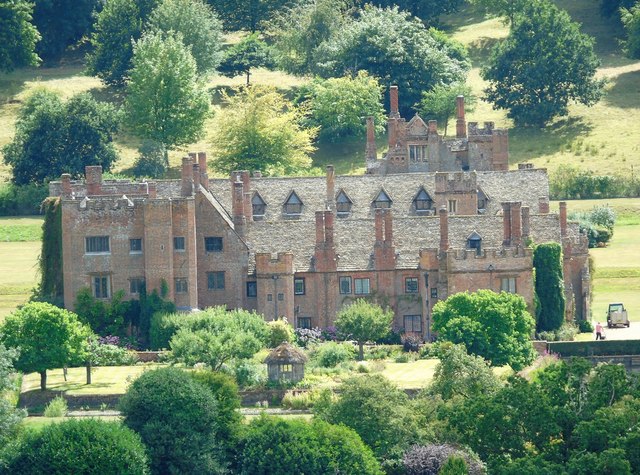
However, the wheels of fate turned; Prince Arthur, the Tudor heir, died at Ludlow Castle in 1502, and Prince Henry succeeded his father seven years later as King Henry VIII. Although Compton was nine years older than Henry, the two seem to have developed a close friendship, for after Henry’s succession, Compton was soon appointed Chief Gentleman of the Privy Chamber and Groom of the Stool. Physically, he was the King’s closest companion.
William also shared the King’s love of vigorous physical exercise, which no doubt bound them further in their bonhomie. On several occasions, there are accounts of the two of them successfully challenging all-comers, ‘with spear at the tilt one day, and at the tourney with the swords on another’. If the contemporary accounts of Elizabeth Amadas are to be believed, then it seems Sir William also played a key role in hosting clandestine trysts between the King and fair ladies of the court at his London home on Thames Street. So great was the King’s favour towards William that a year before his death, he was given the unusual permission to wear his hat in the King’s presence.
As a result of such favour, grants and money would soon follow, bolstering the Compton coffers. Amongst many other offices, he was made constable of both Sudeley and Warwick Castles. This meant he had use of the properties and could make money from the estates in return for keeping the buildings in good order for the King. Such appointments were lucrative – and much sought after. It was the making of William Compton, and as money flowed in, Sir William (knighted on the steps of Tournai Cathedral after the glorious English victory there in 1513) turned his attention to his principal country residence in Warwickshire.
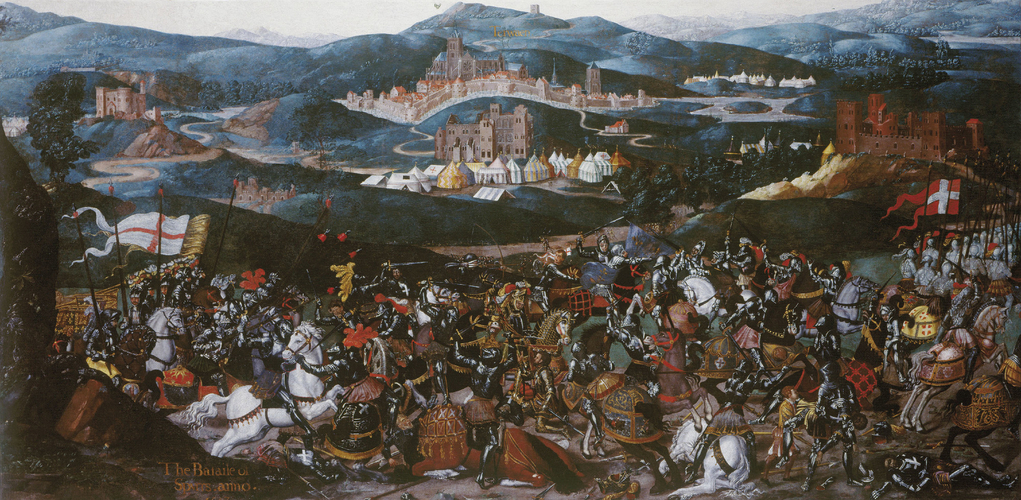
Compton Wynyates: a Grand Country Residence.
The Comptons have lived at Compton Wynyates since the early thirteenth century, and there is undoubtedly documented evidence of a house on the site in 1386. This early medieval house was probably wholly dismantled and replaced in the late fifteenth and early sixteenth centuries.
The current building was erected in two phases; the first was a simple quadrangular house arranged around a central courtyard; the second phase shows embellishments to this basic design: turreted stairwells, bay windows, a chapel and a residential tower. It is possible that Sir Edmund Compton, William’s father, was responsible for the first phase. Alternatively, William’s meteoric rise in good fortune allowed him to begin and eventually complete both phases.

The exact date for the start and the finish of Compton’s building campaign is not entirely clear; it could have been as early as 1481 (under Edmund Compton) or after William Compton reached his majority in 1503. The other alternative is that phases one and two happened quickly and in succession when Sir William Compton’s fortunes were ascending following the accession of Henry VIII in 1509. According to Emery, the latter seems more likely, given the documentary and architectural evidence.
However, what is more certain is the date of the likely completion of Compton Wynyates. The arms of Henry VIII and Katherine of Aragon appear in three places in the house: over the entrance porch, in the chapel window and the Henry VIII bedroom. Documents also named ‘the new tower room’ in the residential block in 1523. The conclusion is that the most likely date for the second phase of the building at Compton Wynyates was between 1515 and 1520, before Katherine of Aragon’s fall from grace and her replacement by Anne Boleyn.
Compton Wynyates: the Layout of the House.
Emery writes that ‘the internal plan of Compton Wynyates survives, though somewhat distorted’. However, the hall, the buttery (with a chamber above it), the chapel and the privy apartments in the residential tower all retain their original, early sixteenth-century glory. And so, let us re-imagine the building at the time of Henry VIII and Katherine of Aragon’s visit in September 1526. (By the way, this is an interesting date; Henry’s affair with Mary Boleyn is probably over; Thomas Boleyn seems high in the king’s favour, and at some point around this time, Henry’s attention falls on Anne Boleyn. We might, therefore, suspect that Anne was in tow as one of Katherine’s ladies during the 1526 progress).
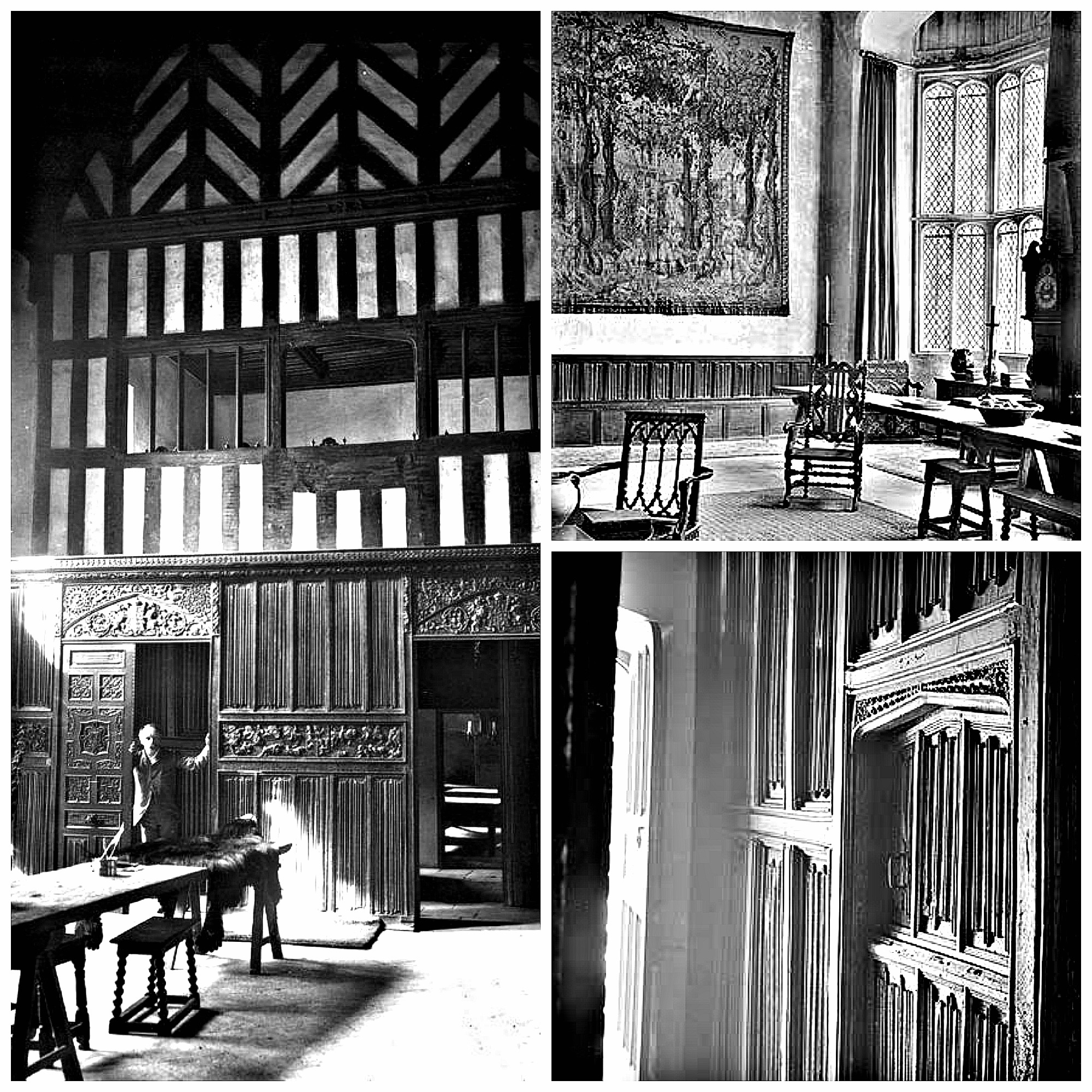
The visitor at this time would find a luxurious, fashionable manor house built of deep-red brick, diapered in places, held lightly by the gently sloping hills surrounding it. Entry to the manor was via ‘the great drawbridge’, which crossed the [probably dry] outer moat. This, in turn, led to ‘the great court’ containing service buildings, barns and stables, which were mostly timber-framed. To reach the house, a second inner moat was crossed with a porch leading through into the inner courtyard. Above the porch, Sir William was granted permission to display the royal arms, surmounted by a royal crown with the inscription ‘Dom Rex Henricus Octav‘ [My Lord King Henry VIII]. There it remains to this day.
Imagine that directly opposite you is the Great Hall, with its usual configuration of kitchen, buttery and pantry at the low end and access to the public and private apartments via the high end. Many of the hall’s features are original or salvaged from another nearby Compton property, Fulbrook Castle (including much of the vaulted ceiling and bay window). The wooden screen, which screens off the lower end of the hall, contains a central panel ‘supposed to represent French and English Knights at the Battle of Tournai’ – clearly, this is a nod to Sir William’s finest hour in service of his lord and master.
Sir William’s Privy apartments and adjoining chapel were located in the south range, catching the best of the summer sun. The apartment block, built by Compton, is four storeys high. It presumably contains the ‘Henry VIII bedchamber’ where Henry, and perhaps later his daughter Elizabeth, slept during their visits to Compton Wynyates. There is certainly a record of ‘King Harry’s gilt bed’ being pillaged by the Parliamentarian forces (which seized Compton Wynyates from the family) in 1644. After the Restoration, it was returned to the house, only to be sold tragically when the family faced hard times in 1774. Just think where it might have ended up! Of course, it is likely that in this privy chamber block, if not in this very room, Sir William Compton succumbed to ‘The Sweat’ in 1528. It was a virulent disease that could carry away the sufferer in a matter of hours.
Sir William was buried in the nearby church (this sits separately from the manor house and is not to be confused with Compton Wynyates chapel). One presumes that this was once the parish church for the village, which Compton had cleared away to improve the outlook and surroundings of his grand country home.
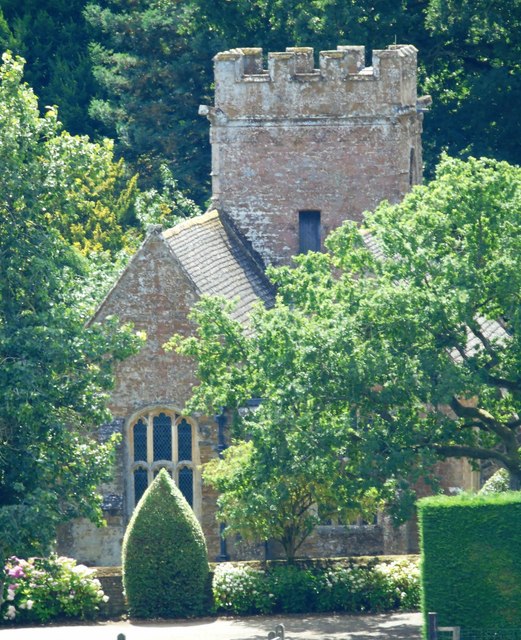
Unfortunately, there is no known portrait of Sir William, except for his depiction in stained glass both at Balliol College in Oxford and in the chapel at Compton Wynyates; and that must be my final treasure in the house. Wenceslaus Hollar sketched the image in the Compton Wynyates chapel, and we can see this below: the image of a slender, clean-shaven gentleman, sword at his side, spurs fixed in place, kneeling in prayer opposite his wife, and accompanied by three children; two sons and a daughter.
But what of Sir William’s body? The aforementioned church was destroyed during the Civil War but was rebuilt in 1665. The mutilated, stone-carved, recumbent figure of William Compton, wearing a ‘collar of S’s round his neck, bearing a rose badge of the Tudors’, was recovered from the moat at the restoration. It was replaced on the north side of the church, where it remains to this day.
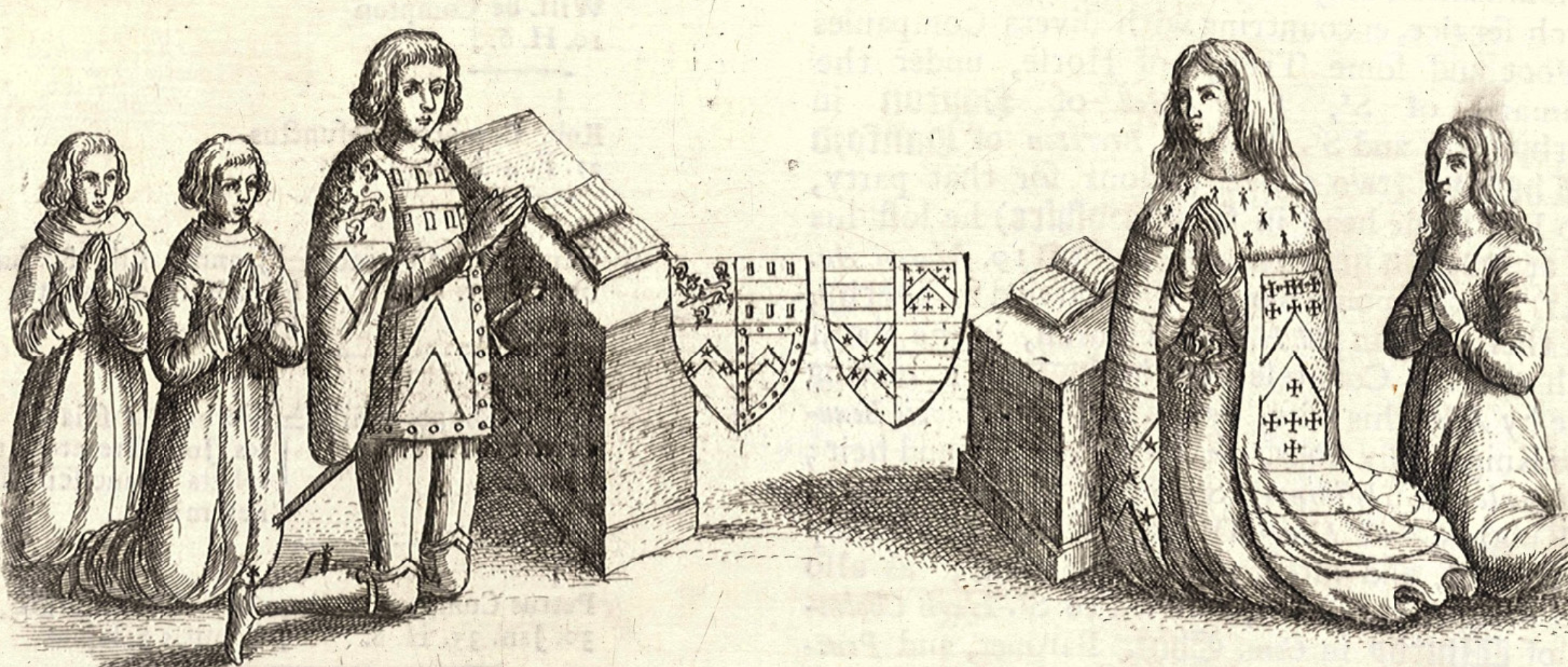
During his lifetime, Sir William Compton was one of the most influential men in England. He was the King’s childhood friend, a close companion and a loyal servant. Rewarded for that loyalty, in the early sixteenth century, he renovated his country house to create a manor fit to receive the royal court – as it did on several occasions. It is a cliché, but Compton Wynyates is that Tudor time capsule. It has remained well-preserved across the centuries when other houses were being ‘messed with’ by well-meaning Georgians or Victorians.
Open to visitors during the mid-twentieth century, it is now the private home of the Marquis of Northampton and has not been open to the public, as far as I know, for around fifty years. As a result, only the lucky few hold cherished childhood memories of visits there with their parents on lazy summer afternoons. The rest of us can only dream of again being able to follow in the footsteps of Sir William and the royal court, to see some exquisite Tudor treasures and the dreamily romantic and singularly beautiful manor of Compton Wynyates.
Note: If you have memories of visiting Compton Wynyates as a child, please post a comment below. I’d love to read about what you can remember.
[NOVEMBER 2023] P.S. Since launching this blog, many people have, indeed, shared their memories of visiting Compton Wynyates, either visiting with family or with their school. Several people have offered to send family snaps or official photographs showing their visit to Compton Wynyates. As a result, I have included a gallery below, which I will continue to add to as photos are sent in. If you have anything that you would like to contribute and are happy for me to share publicly on this blog, please post a comment below, and I will email you privately. THANKS!

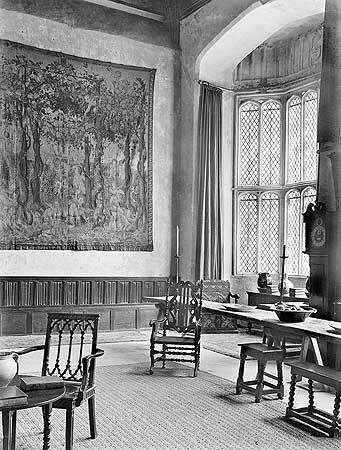
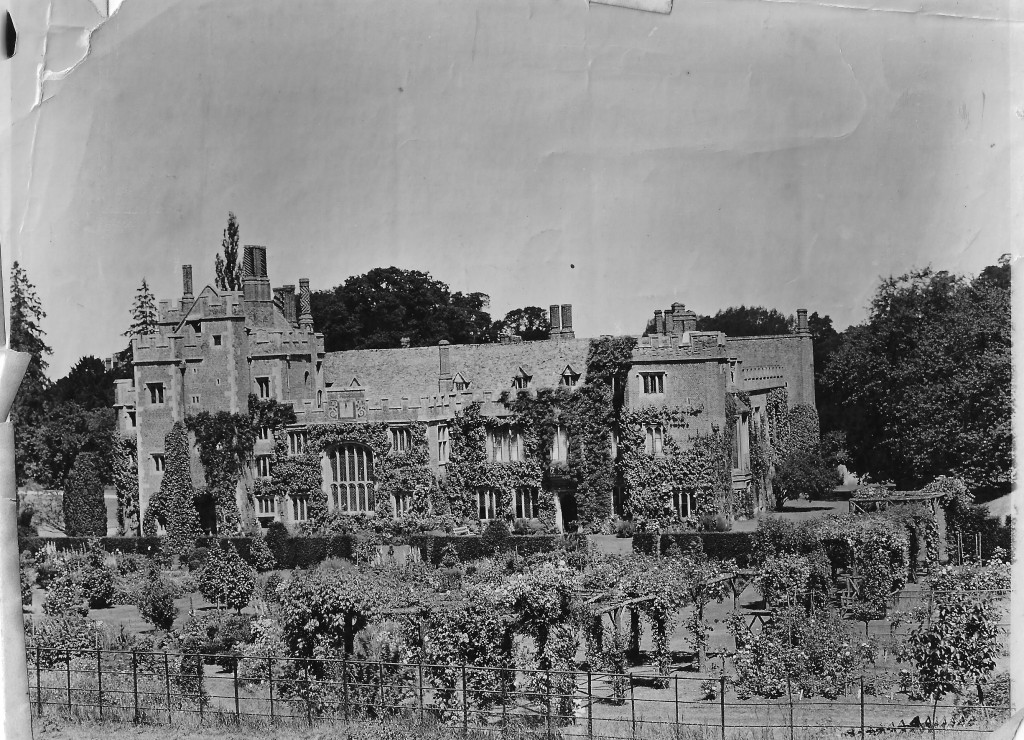
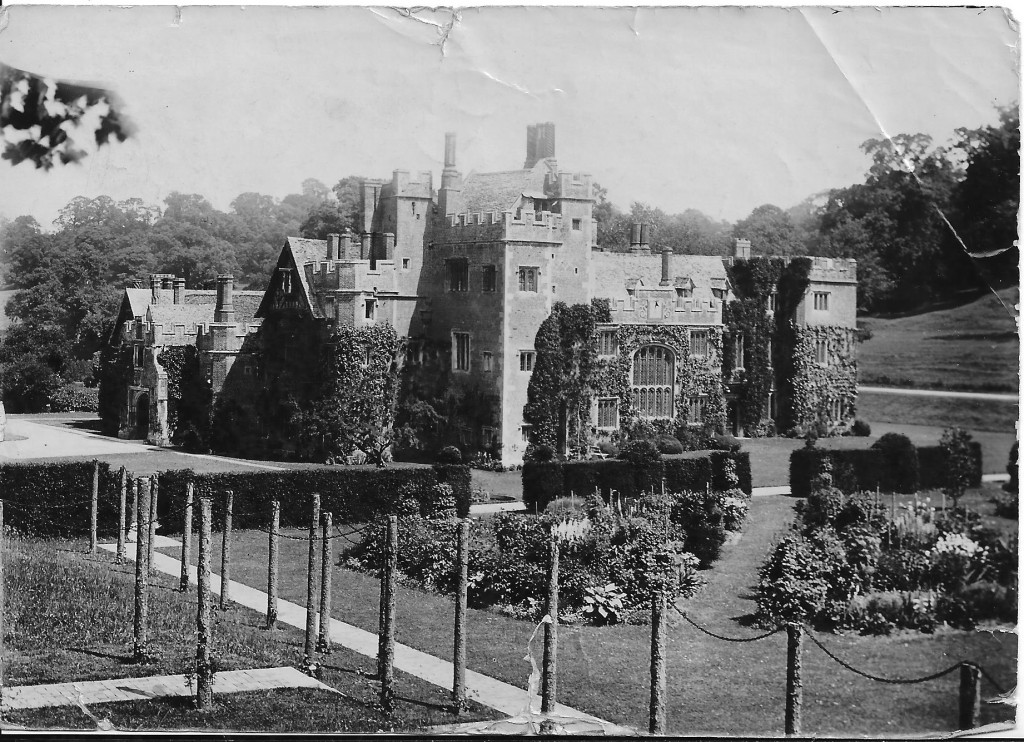
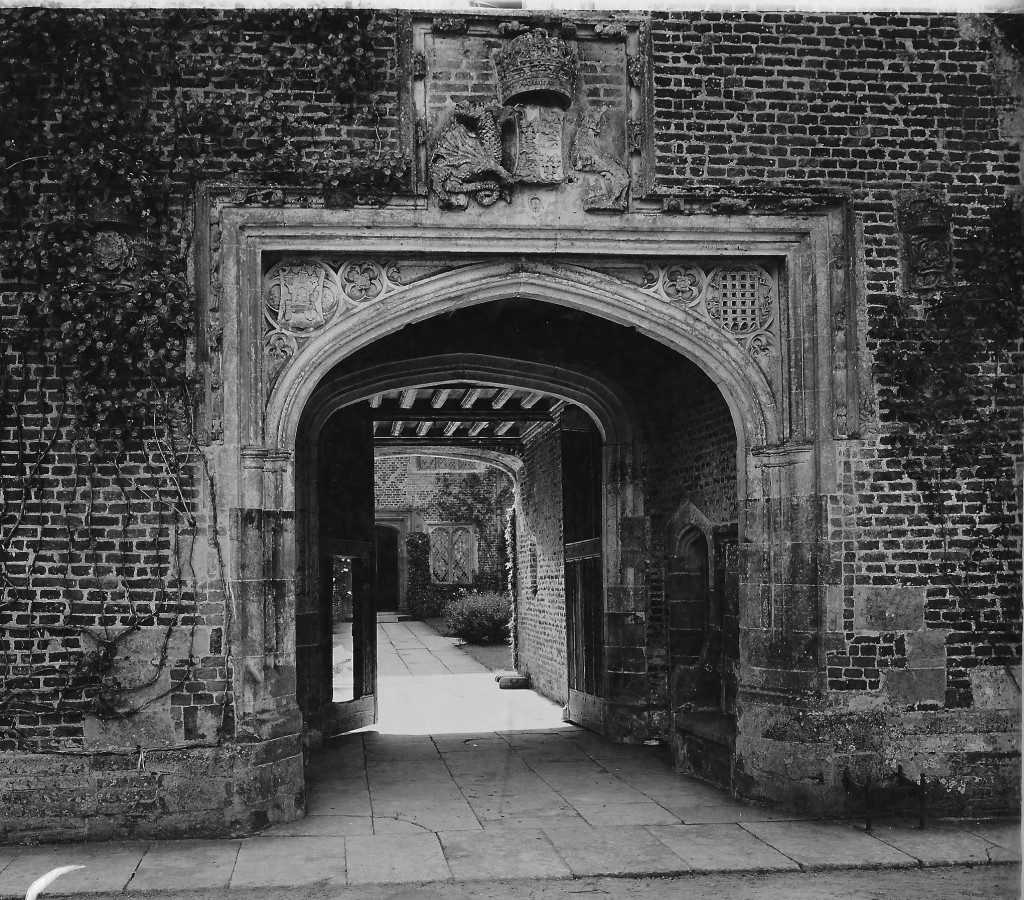
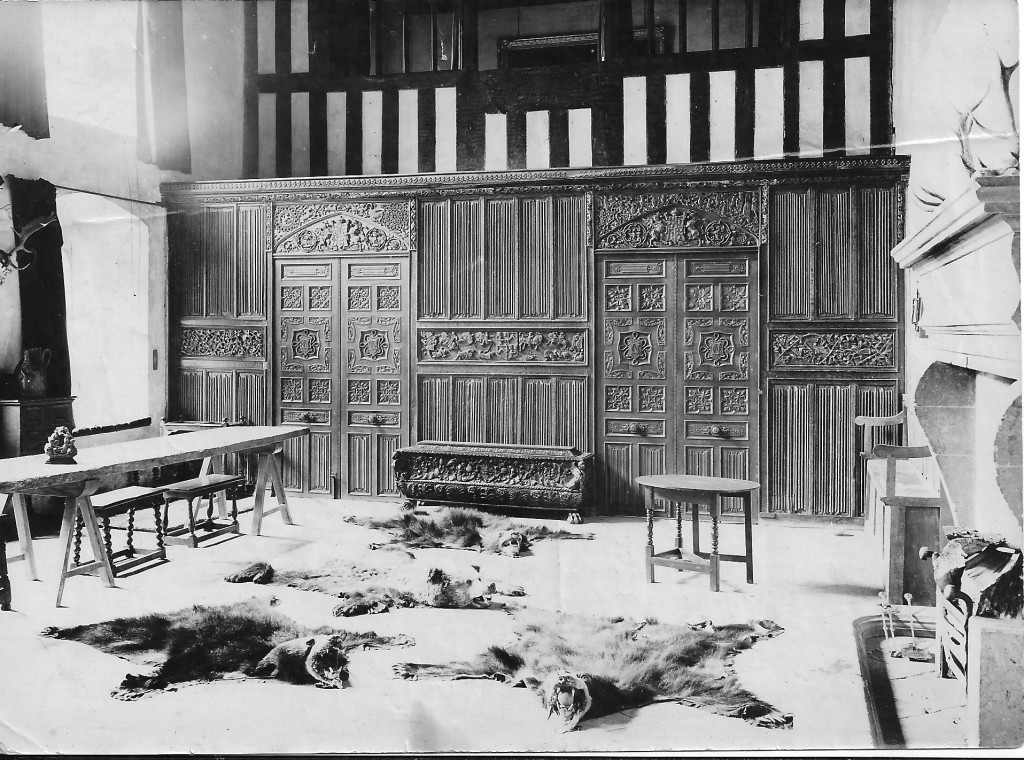
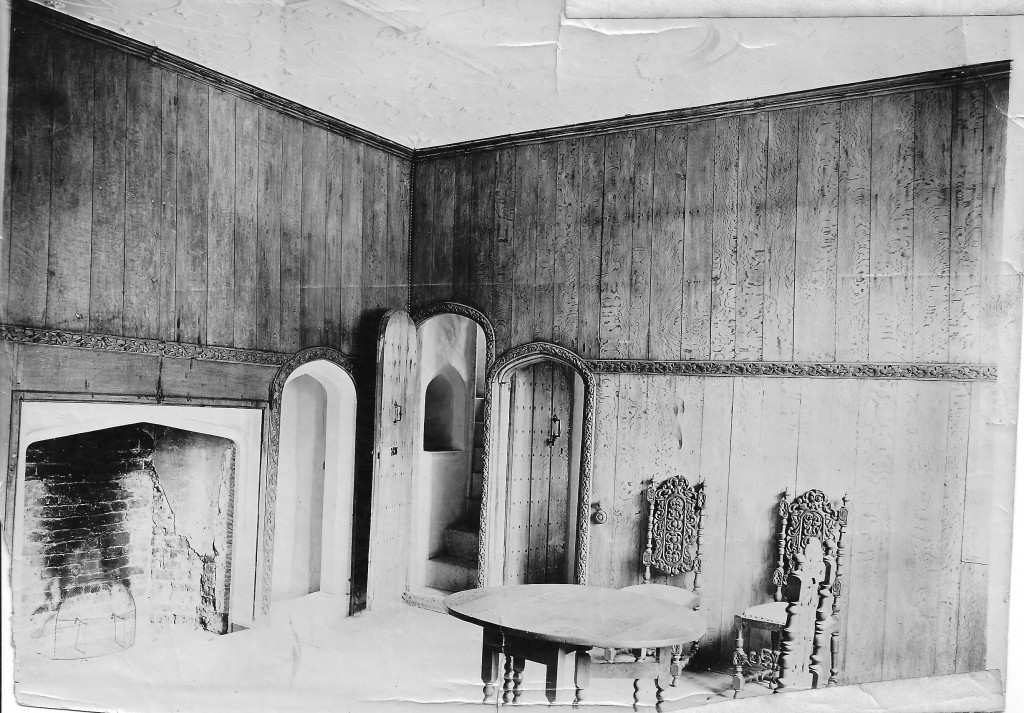
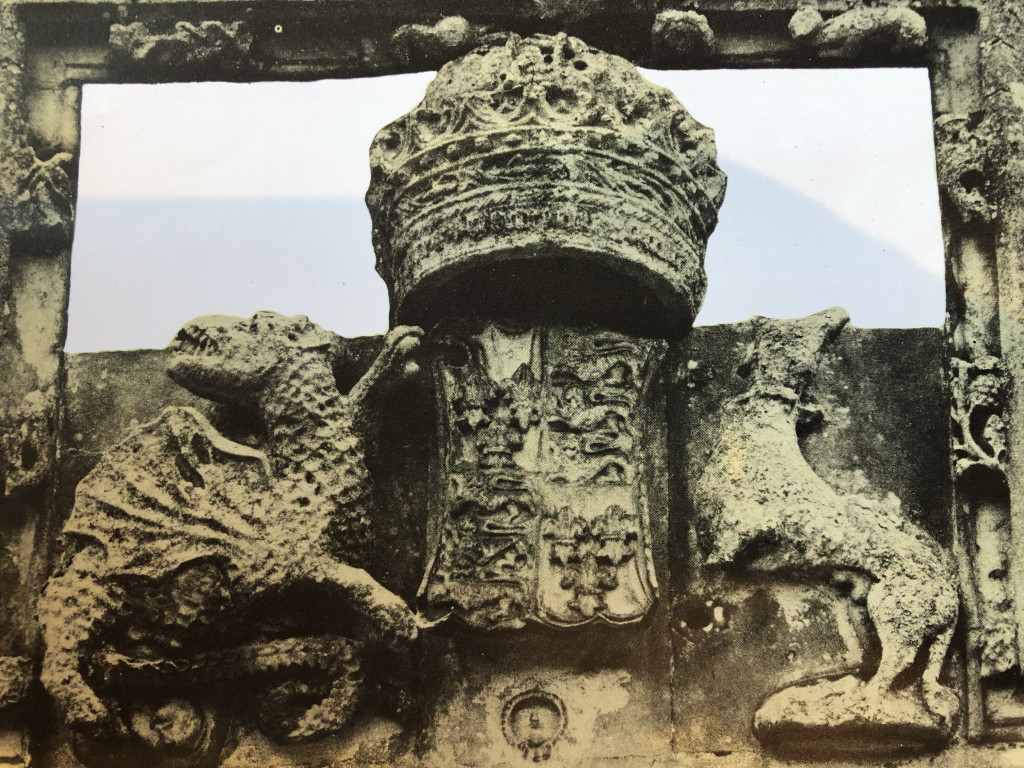
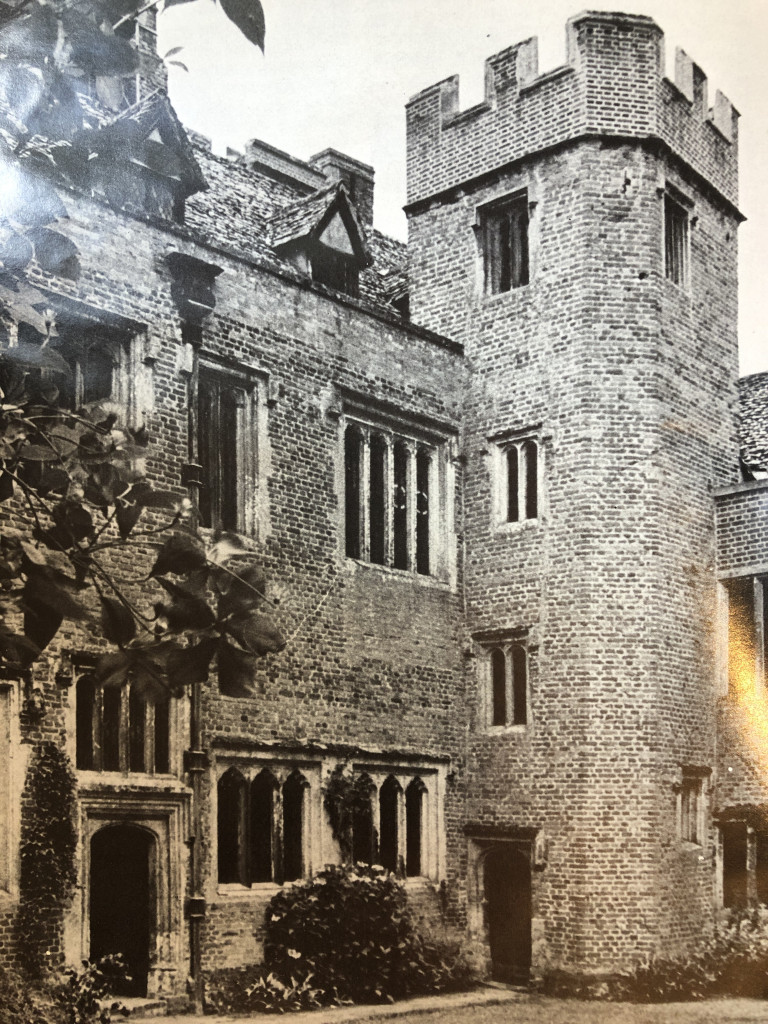
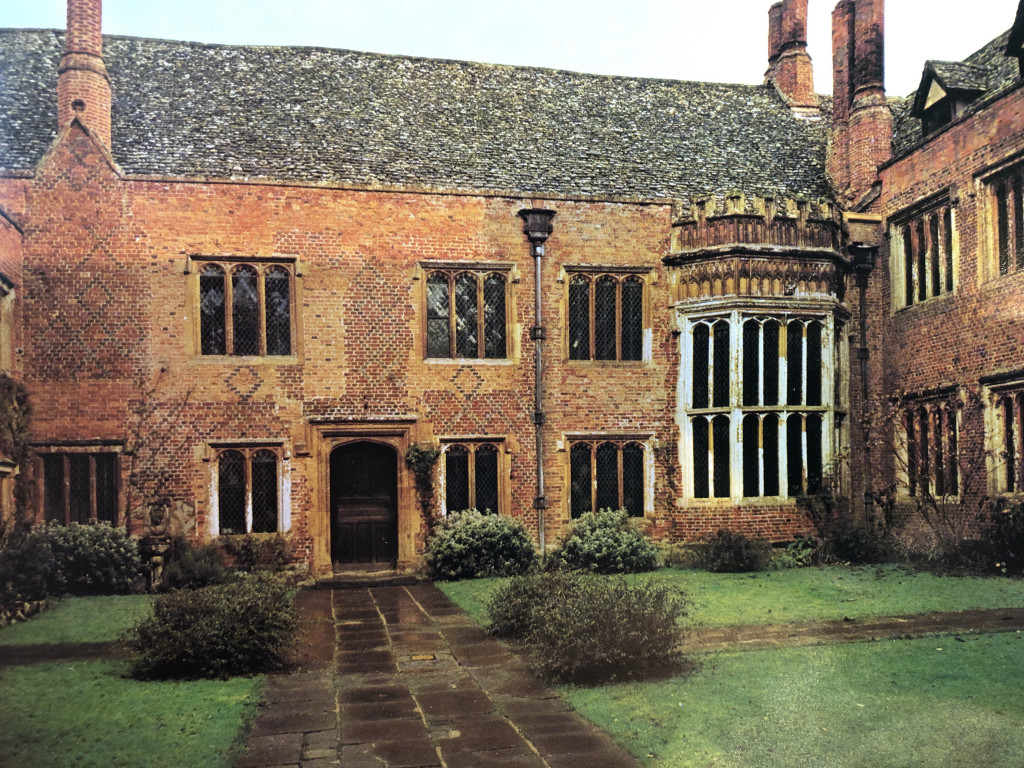
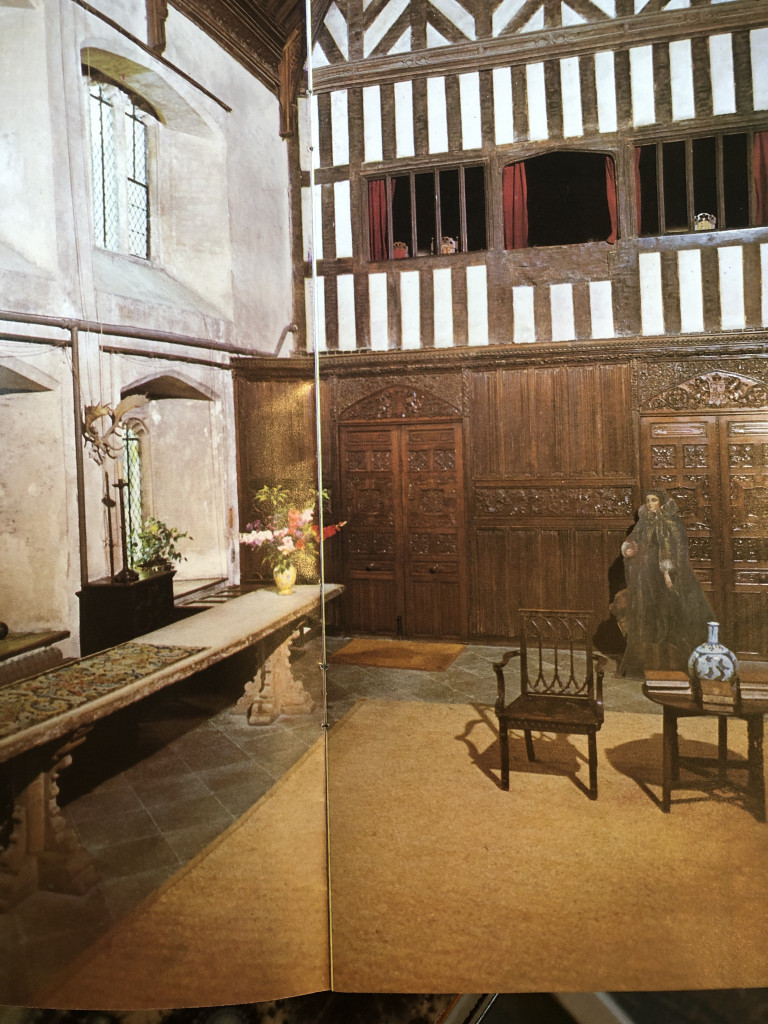
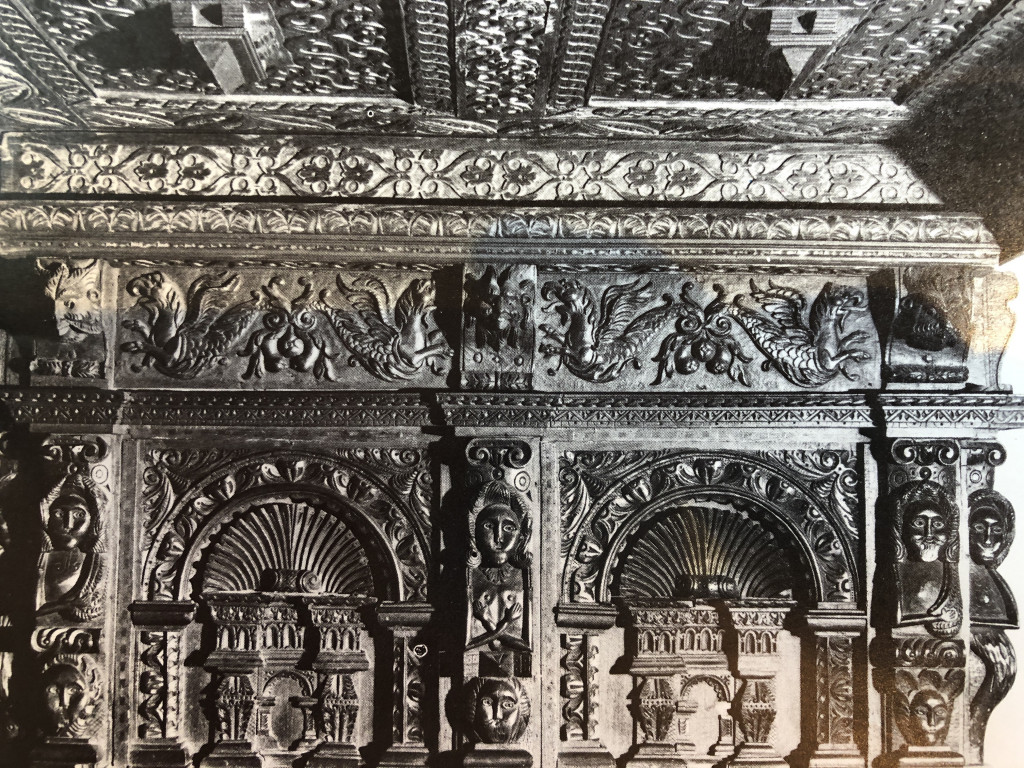
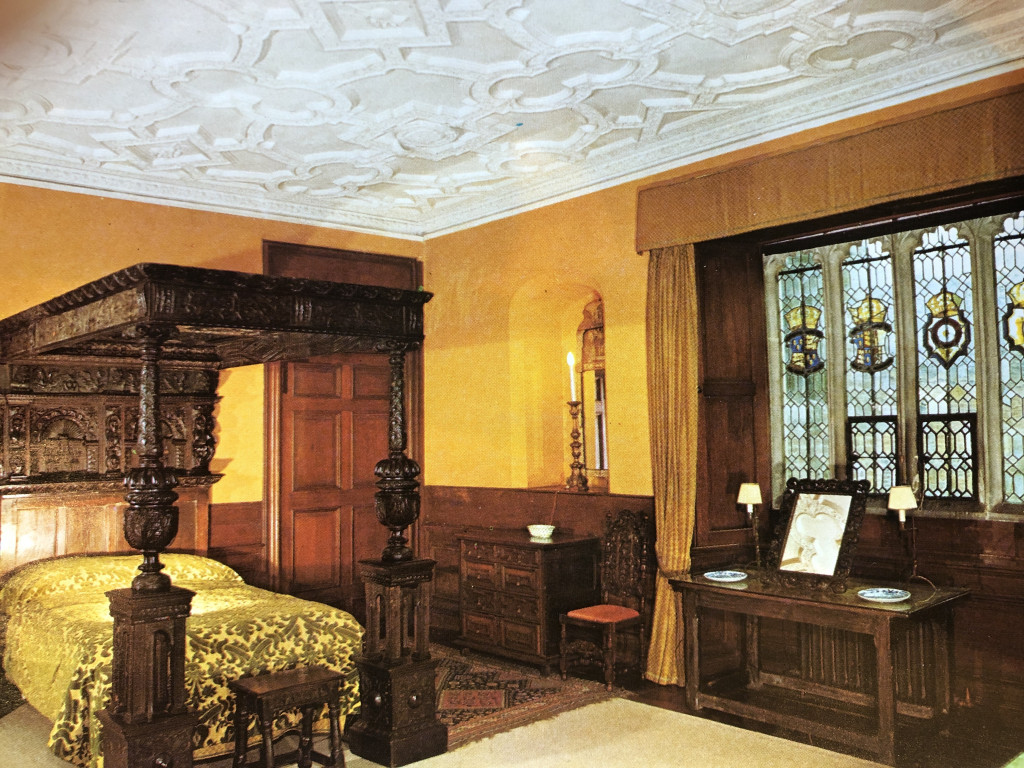
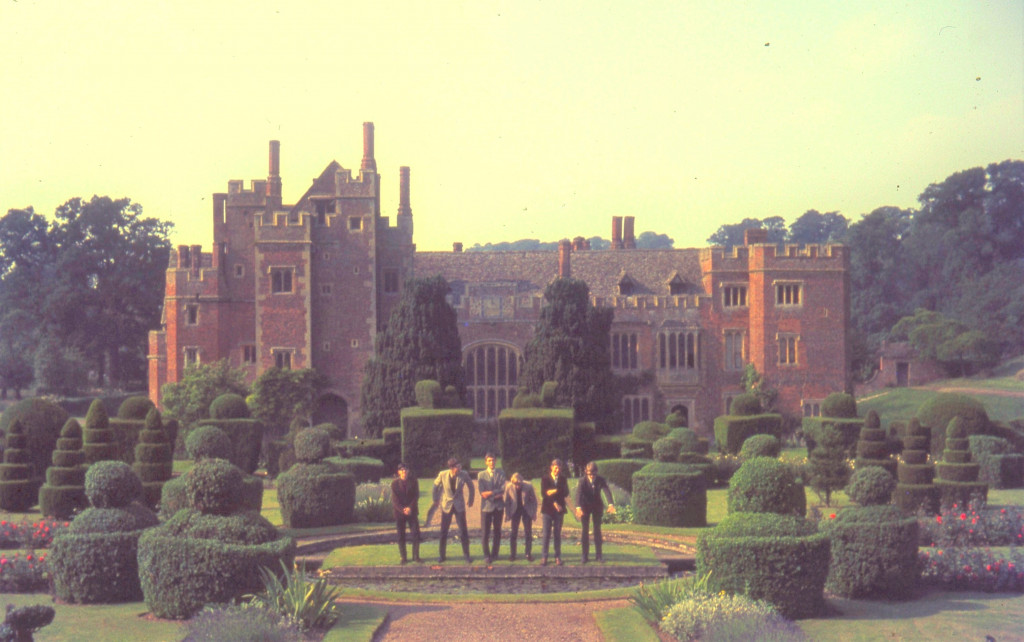

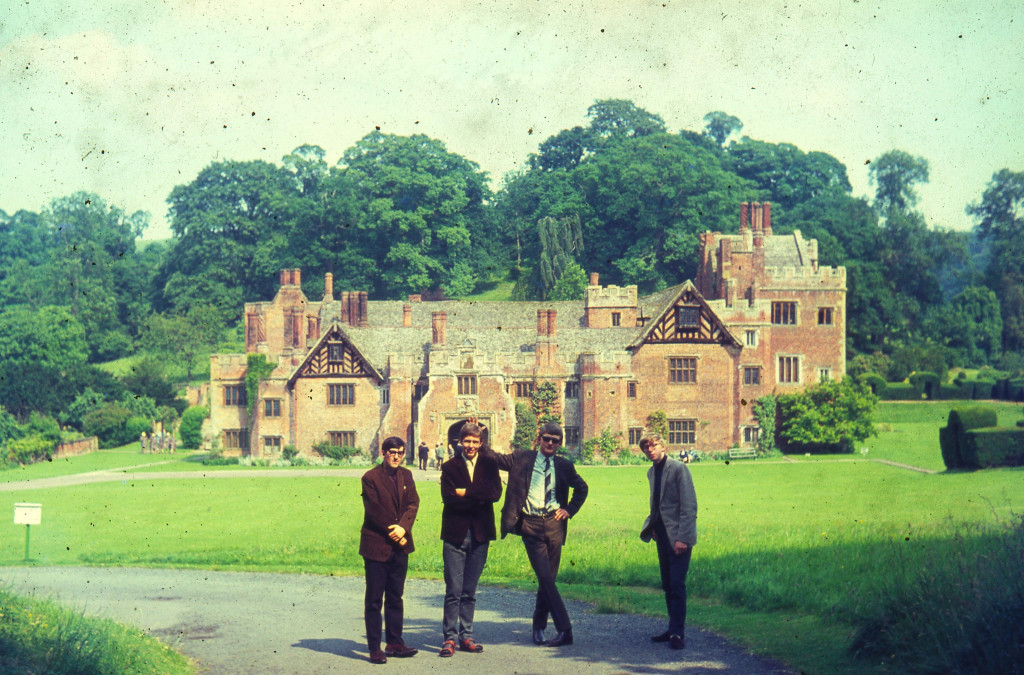
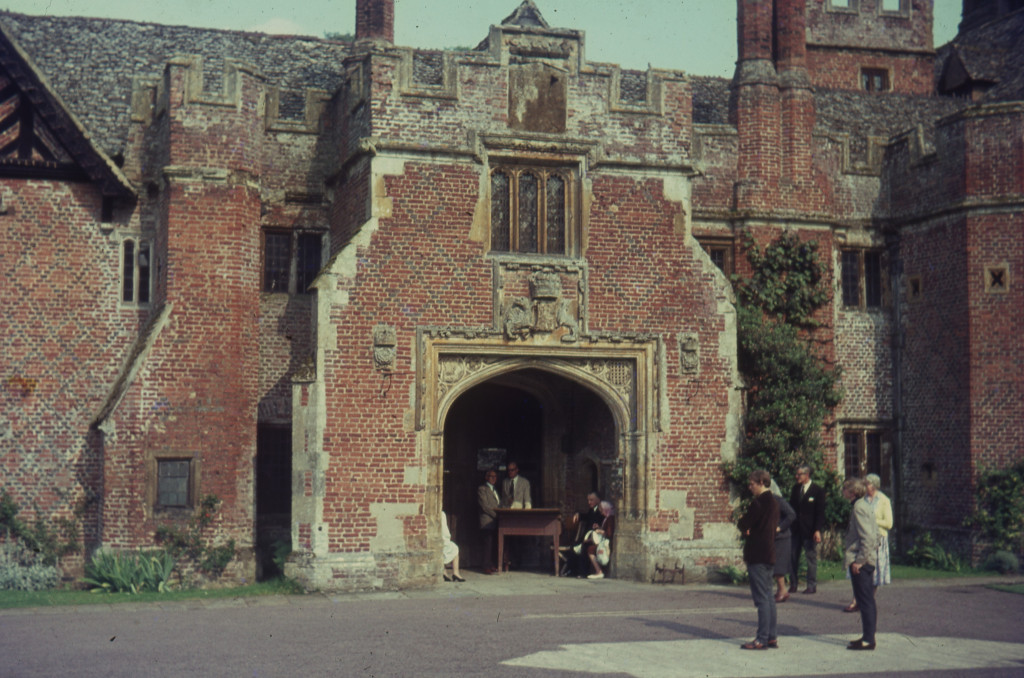
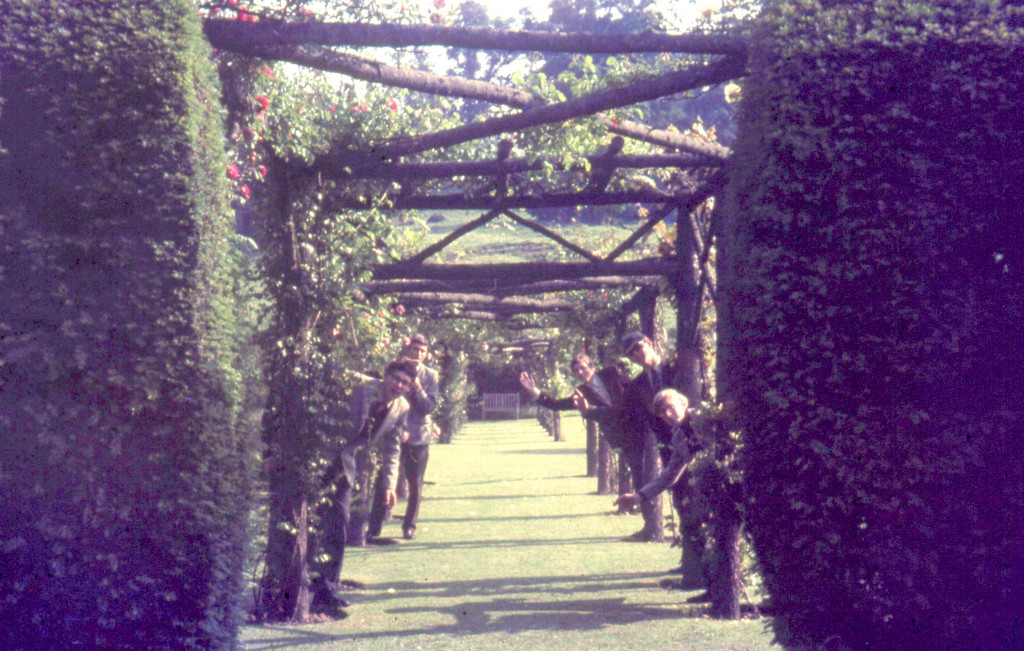
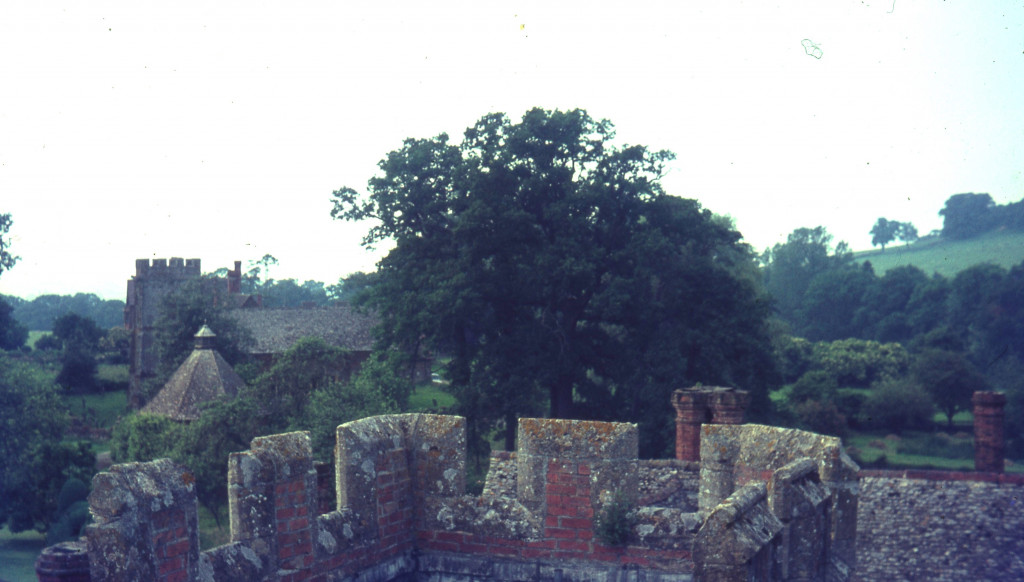
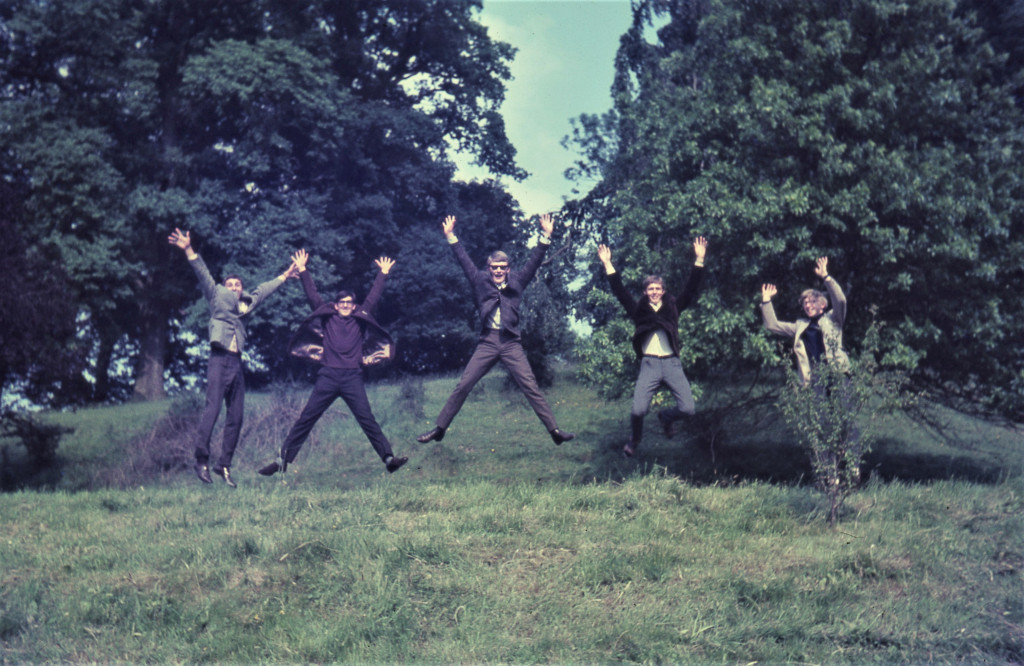
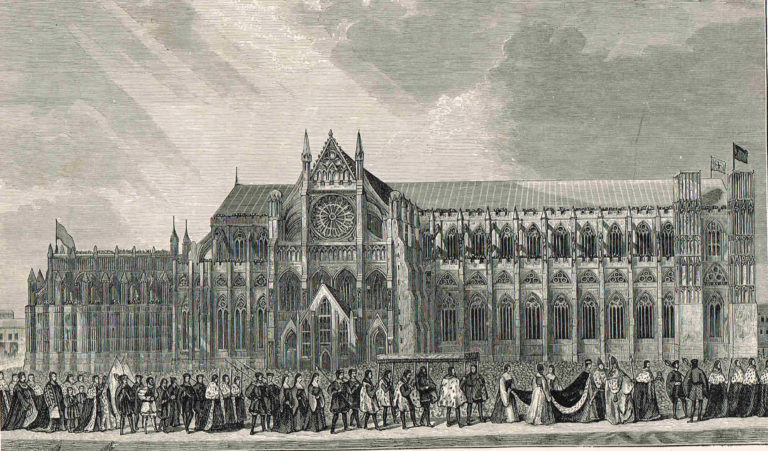
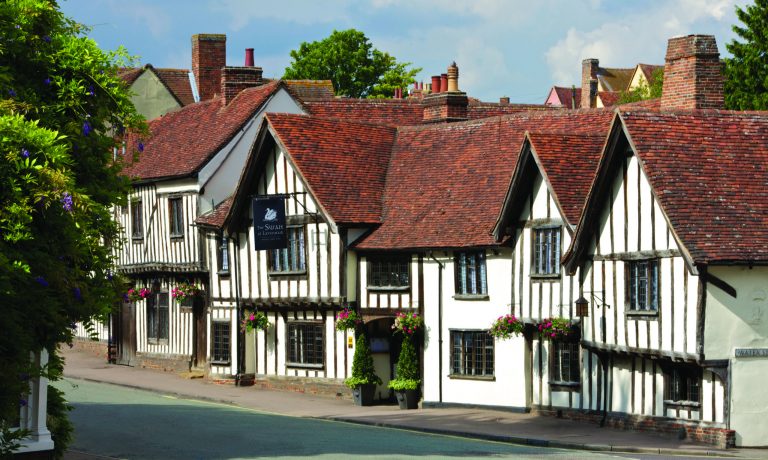
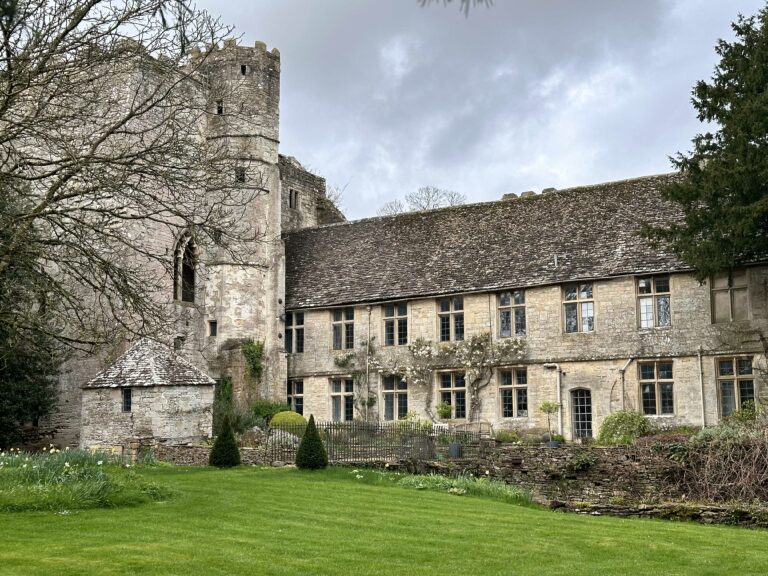
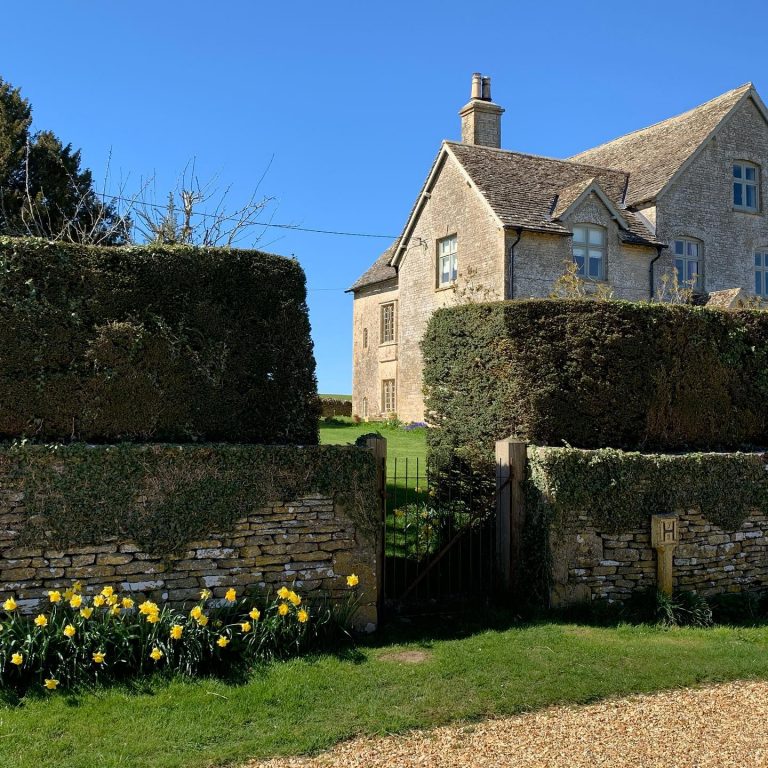
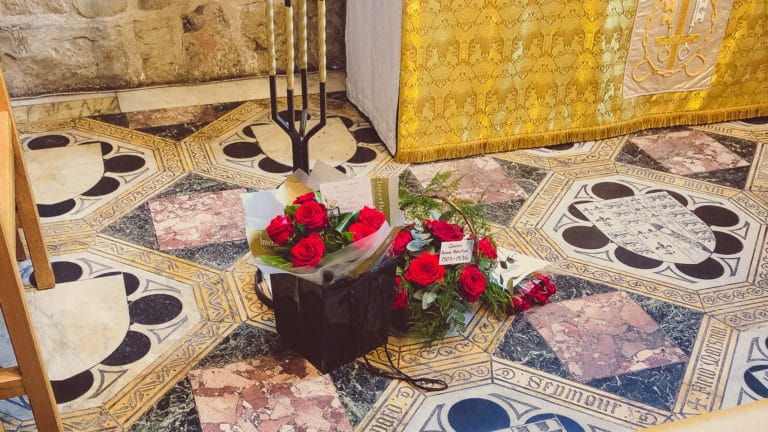
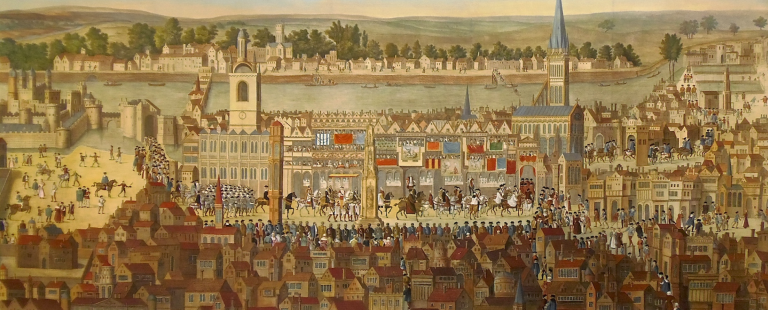
I was one of the lucky ones to visit as part of a school party in the mid 1960’s. Although specific memories are vague I can remember a priest hole and a warm and comfortable home with lots of wood panelling.
Thanks so much for sharing what you can remember. I love the fact that it felt like a home.
I went to Compton wynyates when I was 7 maybe 8 on a class trip. I fell in love with it instantly! I believe we were shown a priest hole and I loved the smell of the house and the texture of its beautiful panelling. the topiary outside was lovely.
Lovely memories! Thanks for adding them to the blog. Best wishes, Sarah
It must have been open later. I visited in 1979. We picnicked in the gardens – warm sun and strawberries – perfect.
Thanks for that clarification. I knew it was somewhere around the late 60s or 70s but now we have a date of 1979. You must be one of the last ones to see it. Lucky you!
I visited on a family holiday in the Cotswolds in summer, 1967 – I was 15. I don’t remember much in detail, but I do remember falling absolutely in love with the house – ever since it has been my ideal of the perfect Tudor mansion. A few years ago I recreated it as a ceramic plaque, working from a photograph in a lovely coffee table book called ‘Ancient Houses’. Such a shame it isn’t open to the public any more. Surely they could manage one day a year? Especially as they’re doubtless in receipt of numerous grants and subsidies to maintain the fabric of such a historic building.
I just love your recollection of how the place made you feel and that having visited you wouldn’t disagree that it is the ‘perfect’ Tudor mansion. Do you still have your plaque?
Of course I still have my plaque! I was very pleased with it and it’s survived not only a house move, but several acrobatic and mountaineering cats.
I visited several times as a child in the early 50s. As I was only about 10 or 11, I don’t remember too much. But I remember the priest’s secret room, and a general feeling of comfort and familiarity, even as a child. I live in Canada now and have for many years. I am hoping to visit the UK, and was considering going back to Compton Wynyates, and taking my family. But now I know it’s no longer open to the public,sadly, I will make other plans. Maybe drive close enough to see it though.
A wonderful recollection, Ann. Thanks for posting. The theme seems to be of a warm and comfortable country home. Sorry you will have to change your plans but hopefully this has saved you unexpected disappointment. Let’s hope someday it will open again…
I would love the chance to visit, very sad that it’s never open to the public. Researching my family history I found that my ancestors were born, married and baptised at Compton Wynyates as they were servants, dating right back to the time of the Civil War. What a fascinating life they must have lived! As a child I was taken to Warwickshire, and had a vague recollection of my Mum telling me how important her family history was, but of course, memories are hazy as I was only 5. Now doing loads of research into this gorgeous house. Enjoyed your blog, thank you!
Hello! Thanks for your post. What a great story! How wonderful for you. I’d love to get inside, wouldn’t you?! Good luck with your research. Sarah
Although this beautiful building closed to the public before I was born, one of my all time favourite films growing up was Disney’s ‘Candleshoe’ starring Helen Hayes, David Niven and Jodie Foster. This was filmed in and around the grounds so you can see much more of the pictures you have in black and white of the inside of the Manor House and estate as well as the lovely staircase.
I would really recommend this to anyone, although the dvd is more popular in America than here (my dvd is region 1 which plays on a multi region DVD player).
I realise this isn’t a documentary on the house and obviously there will be some set dressing but you can see much of the original building with some wonderful features. It’s also a great Sunday afternoon film.
Hope you can give it a go ????
Sam Nicholls
Fabulous recommendation. I saw it a long time ago – but before my real interest in Tudor buildings. I’d love to see it again. Top recommendation. Thanks!
Most of the interiors are filmed on a set, or the house has changed a enormous amount since i was lucky enough to vist the house in the 1990s and when it was filmed.
The interiors scenes of Candledhoe were filmed in studio (at Pinewood?), and are totally different from Compton’s interiors.
I’m glad you posted this as I remember specifically a movie being filmed there but could only remember two of the actors, Helen Hayes and David Niven. I could not recall the name of the movie or Jodie Foster, a young Jodie Foster I might add.
Happy to oblige!
I grew up nearby and my dad knew the area very well. Somehow he managed to wrangle us onto an extremely rare tour of Compton Wynyates when I was a kid (maybe around 10?) in the 1990s. It was coach party, but I have no idea of how they managed to wrangle entrance. It made a massive impression on me (especially the attics and the incredible great hall) and whenever I’m visiting (my dad is buried in Tysoe) I try to get a sighting of it from the road or the ridge!
Oh, golly! That is my dream. Lucky you. That is rare indeed. If you ever find yourself wrangling another trio, can you invite me along : )
I lived at a farmhouse less than a mile away. I remember Candleshoe being filmed during the impossibly hot summer of 1976. Our friends farmed Compton Wynyates land and we went up the main drive many times to have supper with them next door to the Manor house itself. I was pregnant at the time and that baby is 43 this Wednesday. I wondered if I could visit, but have just found out that it’s not possible.
I love all these wonderful stories of Compton Wynyates! Thanks so much for sharing yours. That is SO interesting! Let’s hope maybe one day we will be able to get in there again.
My dad exercised racehorses at Compton Wynyates around 1951-52. We have a few photos (probably taken by my mother) of the yard with the horses in it. I visited Upper Tysoe in 2018 and took a few photos of the house through the gate. Such a pity that it isn’t open. It looks to be a magnificent house/garden. Nice article.
I wrote a blog post on my blog that included a mention of Compton Wynyates. I linked to this post. I hope you don’t mind. Lovely post. http://www.shareacuppa.com
Not at all… a lovely story and very interesting story wrapped around the chapel! Just down the road from me, so I might have to go check it out. Thanks for dropping by and reading my blog.
I remember visiting Compton Wynyates as a small child in the late sixties, and have recently stumbled across the guide book my parents bought during our visit.
I remember that in about 1954 about ten boys from my prep school were taken to visit compton wynates. they were aged between 11 and 13. about 80 other boys were not considered suitable to visit. many of those unconsidered ones went on to distinguished careers and had done a lot for the school. why were they left out? something to do with snobbery or sucking up to parents or just sheer,unashamed favouritism by the headmasters wife.
Remember coming upon this beautiful house by accident in 1979 and it was open remember the secret priests hole ,much beautiful linenfold panelling and the topiary garden ,
. Does that still exist ? Such a perfect house went there recently could only gaze at it from the entrance gates .
Hi Suzanne, lovely t hear your story of Compton Wynyates. Like you, sadly, I have only been able to stare down the drive. So I don’t know what lies behind those gates today. It’s at the top of my bucket list!
We also visited by accident but there was a film being shot with David Niven I think and we couldn’t get in. We came back however and I’m glad we had a chance to see it as I never forgot it!
David Niven – what a classic! Glad you got in though…lucky you!
You might be interested in reading a book called SECRET CHAMBERS AND HIDING-PLACES
HISTORIC, ROMANTIC, & LEGENDARY STORIES & TRADITIONS ABOUT HIDING-HOLES, SECRET CHAMBERS, ETC. By Allan Fea, available online at Gutenberg.org. It mentions Compton Wynyates in chapter 5, with a brief, but wonderful description. I was so intrigued by it, I searched for more information online, and discovered your blog. So glad I did! Thank you for the information, sorry to hear that the house can’t be visited at the moment.
oooh, that is RIGHT up my street. I will definitely take a look. Hope you find lots more to enjoy here. I also have a podcast, The Tudor Travel Show and YouTube Channel, where there are loads more to see. Welcome!
I went in the 70s as it was in the Historic Houses and Gardens Guide. Remember the beautiful setting and walm mellow interior. Sure I have the Guide they sold somewhere
I’ve found the Guide I bought it also describes the house as Compton-in-the-Hole. It’s not dated but the entry prices have been altered into decimal by biro under 12s were now 20p and over 12s 40p
Funny! Someone just sent me the old brochure. It’s good to see it.
My parents live about 5 minutes away from Compton Wynyates. In my teens I would walk my dog on the hills behind the house for a sneak peak! There is a 1977 feel good family film called Candel Shoe starring Jodie Foster filmed in the house. Worth a watch if your interested in the interior of the place.
I remember visiting here as a young lad of about 6 or so with my mother, I seem to recall one of my relations worked here as house keeper or butler all now sadly gone, this beautiful place have stuck in my mind for the last 50 years. Would love to go back.
Great memories!
My husband and I went to visit the Windmill on the hill behind Compton Wynyates today. Looking down on the house from the hill I remembered visiting there as a teenager with my parents probably around 1968. I don’t remember going into the house so wonder if we possibly just visited the grounds. I have two very clear memories though of sitting on a hill looking at the many different chimneys and the Topiary in the grounds. My parents were always visiting gardens most of which I found very tiresome, but this one certainly left quite an impression. Thanks for all your research and information into the history of the house.
Wonderful! I like that walk up to the windmill. Just take a great pair of binoculars : )
We went on a school trip in the late 70s. I remember the priest hole and wood panelling. I’m sure they had a gift shop too. I loved the building and have always wanted to go back. It sparked a love of tudor buildings.
How lovely! There’s quite a crowd of us dying to visit, I think!
Visited there when I was at primary school in the 60’s. Probably my first sighting of Tudor chimneys and I seem to recall that there was a death mask of Oliver Cromwell on display there in a glass cabinet, (typical odd detail for a small boy to remember I guess). Overall I came away with a lasting impression of Compton Wynyates and was quite sad to find out a few years ago that it was no longer possible to visit.
I am a descendant of William Compton and love reading everything and anything about my ancestors! I would love to be able to visit a part of my heritage.
So I am. Can we connect? Christelcompton@gmail.com
I’m family of William and Edmund Compton, they are my 14th and 15th great grandfathers. How can I learn more or get in contact with my family that may live there now?
Well, I would address it to the estate office at Compton Wynyates. The owner is the Marquis of Northampton – oh, and of you get an invite, can you please take me with you! I only live 15 minutes down the road. Good luck!
My uncle Maurice (Jack) Dolman was care taker at Compton Wynyates !Spent many happy holidays there in the 50s. I absolutely love it !So magical!
Wonderful!
I was a pupil at a boarding school in Warwickshire and can still vividly remember visiting Compton Wynyates with my parents in 1962 during the half term holiday. We had been driving for some time down country lanes and I was wondering what our destination was. As we descended the hill we suddenly turned right at the entrance gates and I caught sight of the house and was captivated. It had particular significance because the period I was studying in History that term was the Tudors.
That visit was the catalyst for my enduring interest in historic houses. A few year later my father and I received the privilege of a private tour of Ightham Mote in Kent when it was owned by Charles Robinson.
A decade later, although it seemed a huge amount of money at the time, the best investment my fiancée and I ever made was Life Membership of the National Trust. The first property we visited after receiving our green cards was Baddesley Clinton.
Wonderful recollections! Thank you for reading and posting.
Hello Brenda,
If you happen to see this Maurice (Jack) was my grandfather
My email address is sud_tech.0o@icloud.com if you would be interested in getting in touch
Phil
When I lived in Stroud, Glos, and used to visit my parents in Wigston, Leics, in the 60s and 70s we often used to detour via B roads to vary the journey. Compton Wynyates was one of my favourite stopping spots. What we could see of the house made it always look somehow magical, but I suspect that was the illusion of it being a very old house viewed through the lens of a modern era. How I envy the people who managed to visit it during the short period it was open to the public. As a writer of historical fiction a house like it may yet make its way into one of my books.
Thanks for stopping by, Victoria. You will have to let us know if it does make its way into one of your books. I am sure there are plenty of people here who would love to read about it. Best wishes, Sarah
Thank you for this fascinating webpage. I did visit Compton Wynyates at least once – I imagine this was while I was at university, or in my twenties. My wife and I, more recently, have looked down at the house from the top of the drive more than once, and longed to be able to go in. Perhaps one day!
I did make an abortive attempt to take my family there in, I believe, the 1990s, not realising that the house was no longer open. I couldn’t find a phone number for it, but I still possess an old guide book and so worked out the updated number from that. When I rang, I was bluntly told that the house had been “no longer open to the public since around 1980”. I think I was also asked where I had found out the number. Ah, well.
That sounds about right. I get a distinct feeling any approach, which I am dying to do, would be met with the same short-shrift! ?
Interesting Anthony. I too was at a boarding school near Compton Wynyates but in the 1950s. I hated it and the only happy, wonderful memory I have of that time is visiting CW twice. I have never forgotten it (except for lots of the details) and to me it still retains its magic. Magical is a word we throw around without really thinking what it means but I wouldn’t have been at all surprised to have seen the cast of A Midsummer’s Night’s Dream there. For me it has remained the most perfect, beautiful house and setting I have ever seen.
I am a 75 year old American architect whose research finds my ancestry coming through Compton Wynyates. Would love to visit this beautiful home and compare notes on how our family got to where I am today!
Wouldn’t that be fun!
My Compton line goes through Eli Hugh Compton of Virginia, who was wounded at Gettysburg and had a hundred acre farm of which my grandmother, Daisy Compton Lucas received a share upon it’s sale.
Sadly It also goes through William Compton who had his jaw shot off in the first year of the Revolution fighting for the U.S. and New York. His wife was Hannah Post from Holland.
Sound familiar?
I am a descendant of William Compton through my ancestor Alexander Hewitt (b. 1797) who married Mary Compton in Spartanburg County, SC. Her pedigree goes back to the Comptons of Maryland. William Compton had a descendant John who was born at the Compton English mansion Wynyates in the mid 1600’s and migrated to Maryland. I would love to exchange pedigrees with you.
About 16 years ago (circa 2007), I was touring England with my father. We sought out Compton Wynyates specifically. I’d admired the house for years and wanted to see for myself. I got a good picture from the front gate, sticking my camera lens between the bars and zooming in as close as I could. As we were heading away toward our next destination, I realized I’d lost my lens cap. We pulled over so I could search inside the car. As I looked, a magnificent convertible, heading toward the house and occupied by a very distinguished couple, rolled to a stop (we were less than a quarter-mile from the house) and the driver asked if I needed assistance. Like a fool, I said no, thanks, but never thought to ask if they were the owners of Compton Wynyates. Not that I would have expected an invitation to tour the house, but still. How many people in luxury convertibles (Rolls Royce, perhaps?) would be driving so close to such an extraordinary house and NOT be connected to it? Who knows? It could have been a golden opportunity, lost because I didn’t think quickly enough!
Hi Mark! Great story. Thanks for sharing…one day I’ll pluck up the courage to contact the estate office and see if I can get an invite! Who knows how close you got ?
We lived in Coventry and spent most weekends driving around rhe Cotswolds, enjoying the landscape and visiting villages and grand houses. We didn’t actually visit Compton Wynyates but parked the car and climbed a hill for our picnic. My father drew my attention to the view through the trees; below were the roofs of a great house with the most glorious Tudor chimneys, all shapes and styles, and so many. It took my breath away and confirmed my hope at that time of becoming an architect. (I never did, too long a training, but many years later I gained an MA in History of Modern Architecture). Thank you for reviving that beautiful memory of Compton Wynyates.
Fantastic story. Thanks for posting it!
I am currently transcribing from cassette the story of a nurse at Ellen Badger Hospital in the early 1930s. She says, ‘One day-off I walked across fields and over stiles about fourteen miles to Compton Wynyates, the country home of the Duke of Northampton I think it was. It was noted for its topiary gardens…’ That’s all she says about her visit. I had to look at your website to find information about the house. I though her brief comment might be of interest.
I am so pleased it was of use to you. A wonderful place indeed!
Amazing article! I recently found out through genealogy research that I am a direct descendant of William Compton! I live in TN in the USA. Absolutely fascinated and would love to visit this home. It is a shame it is closed to the public.
I visited with a school party in 1956. As we crossed the immaculate topiary clad lawn I asked a gardener how they had got it so good. ‘Three hundred years of hand weeding’ was his reply. Much was made of the priest holes on our visit but I don’t remember there being much furniture.
We later climbed a hill to a large dovecote; a food store in days of yore.
Sad such an iconic building should be denied public view. The memory has lived with me.
Wonderful recollections! Thanks for sharing about the priest holes. I didn’t know about them. Best wishes, Sarah
I also am a descendant of the Compton Wynyates family – but from Australia. My ancestor arrived here in the early 1800’s, In the very late 60’s / early 70’s my Uncle visited Compton Wynyates as a tourist. When he was passing through the entrance he introduced himself to the ‘Gentleman’ at the door and was immediately removed from the group – the greeter was the incumbent! My uncle was escorted to the kitchens where he spent his ‘tour time’ filling the family in on the ‘Aussie’ connection as well as learning about our British cousins. He saw very little of the house but said it was the best experience he could have ever asked for!
In 1986 while visiting the UK I, like so many on this blog, was parked at the top of the hill looking longingly down upon the house, wishing I could see within. We can all live in hope …
Another brilliant story…I think I need to present all these stories to the Marquess of Northampton and see if he’ll do one open day!
I at present 82 year old and as a young 16 year old electrician I worked on the rewire for several month visiting almost every corner of the castle and would have loved to have a look round and show my wife.
Ian S
Wow! Fab story. Thanks for posting it.
My husband’s x7great grandfather, Thomas Wycherley 1680-1743, was appointed steward at Compton Wynyates in 1721. That branch of the family continued to live in the Tysoe/Shenington/Brailes/Banbury area until the mid 20th Century.
I am currently working on my family tree and William Compton is my x15 great grandfather (Edmund, x16). I live in the U.S. and have never heard of this beautiful place. Thank you for the pictures and stories and sharing this information about my ancestors!
Fabulous! Glad it helped.
I visited as part of a school trip in the possibility 1976/77 , I remember our coach was in a small crash with a car on the way , the house was absolutely amazing and lit my love for Tudor history, the lady who worked at the gift shop was the one we had the crash with, she wasn’t best pleased with us and showed it
Many thanks for this blog. I visited the house in c1976 and remember it so well – such a lovely, romantic pile. I recall the chimney stacks – possibly 48? – and how every one is different. I always wanted to take my wife there so was very sad to learn, only today, that it has been closed to the public for so long. I too have kept my copy of the visitors’ booklet, published in 1976 and printed by Jarold & Sons of Norwich. It must be a reprint of the reference on Wikipedia.
Either my grandmother (housemaid) or grandfather (gardener) I am fairly sure worked at Compton Wynates circa 1904/5, as neither of them are there in 1901 or 1911.
I have 5 photos of the house and gardens none of which are the same as can be seen on Google. They are obviously professional shots and show considerable detail. The 2 of the gardens ones show the garden before the topiary was even started, but I am unable to copy them onto here.
Hi1 Great story and I’d love to see those photos. I’ll email you, so you can send them to me by return. Perhaps, with your permission, I could post them to the blog. Maybe we should start creating a gallery of people’s images of Compton Wynyates?
Hello: I visited Compton Wynyates on 29th June 1965 with a group of school friends from Walsall and at least one teacher. It must have been after we had finished our A levels and were simply waiting for the end of term. I have only the vaguest memories of our visit, as do the others who went, but recently a few photographs of the day came to light – only the outside of the buildings and the gardens, I’m afraid. Would you like me to send copies to you? They might be of some interest. Just let me know how to send them across to you.
Brilliant! Thanks for adding to this ever-growing book of memories. I’ll email you about the photos. Thanks!
I am a direct descendant of William Compton and Elizabeth Spencer. Their son and my ancestor, John Compton, came to Massachusetts in the 1600’s, so very early on. I hope to see Compton Wynates one day. It looks like a beautiful and magical place.
I passed my driving test in 1963and went to see these wonderful houses whenever I could I remember going to Compton wynyates I remember seeing the windmill on the hill and the big door into the courtyard and I got stung on the mouth by a bee in the garden so drove home in agony .
That would make it memorable!
In 1985/6 a number of people (all living in the Banbury area) were extras in Trevor Nunn’s film Lady Jane. Sadly the Wikipedia entry for this film doesn’t include Compton Wynyates in the locations but I remember it was used – some of the drama group I was part of were used as farm workers/villagers, and I remember being shown photos of them ‘in action’.
Another very well used location very close to my home (Broughton Castle) was also used for Lady Jane as it has been for various films as its moat is a very convincing ‘river Thames’ with the fortified Tudor manor house very close to it. Shakespeare in Love is one example.
Not sure where one can see Lady Jane but I assume you will recognise Compton Wynyates! If anyone does know how to see it I’d be grateful to know.
https://en.wikipedia.org/wiki/Lady_Jane_(1986_film)
Hi Roseanne! Thanks for leaving your comment and your memories of CW. I know you can buy Lady Jane on Amazon. I remember watching it as a child, when my interest in the Tudors was first getting a hold on me and absolutely loving it!
When I visited the UK from the USA with my father in 2006, I made a point of seeking out Compton Wynyates, even though I knew it was not open to the public. I’d seen the house in several books and on TV, and was in love with it. I only saw it through the closed front gate, and of course I wanted to see more, but I was happy. Ironically, just after looking at the house, I misplaced the lens cap to my camera. While I was looking for it by the side of the road (just down from the house), a handsome couple pulled up in a Rolls Royce convertible and asked if we needed any help! Could this have been the owners? I still kick myself for not asking! Who knows? Maybe I could have wangled a personal tour!
I have so enjoyed reading all these wonderful comments. I just wanted to add that all the interior shots of Candleshoe were filmed at Pinewood.
Kind regards from someone who was really lucky to grow up there.
I remember visiting from Denmark with my parents in July 1978 in connection with a three-week-long tour of the south of England and Wales. It was definitely one of the top sights on that trip to be in such a beautiful Tudor home. The large hall was magnificent with the black and white half-timbered walls.
Fascinating piece – thank you! As you say you are local, I wondered whether you were aware of a former moated manor house on Fulbrook Lane just outside Warwick. I have run/cycled past the area for years. From the road you can just about see traces of a moat and I often wondered what had been there. I only recently discovered it was the site of a substantial manor house/castle, owned by the Duke of Bedford among others and visited by Henry VI on more than one occasion. There was also a village between the site and the Avon. Apparently, John Leland, a contemporary of William Compton suggests that it was building material from Fulbrook that was used to build Compton Wynyates. I am sure that I read somewhere that a doorway/gatehouse was taken from Fulbrook and rebuilt at Compton Wynyates but I can’t find any reference to it now.
This blog post refers to it at the end… https://inquisitionspostmortem.ac.uk/blog/a-pleasure-ground-for-the-duke-the-landscape-of-fulbrook-warwickshire/
Hi Chris! No, I don’t know it but very interesting – and a great (very detailed) blog. Thanks for sharing that.
The house was open until the mid 1980s when the Comptons made it their main private residence – around the time the topiary garden was removed. It is also virtually impossible to get to the beautiful church too. You can get a tantalising view of it from the windmill in Tysoe (especially in winter/early spring).
I was on an exchange program to Leland from the USA in 1976. We visited as part of a week-long tour. It made quite an impression on fifteen year old me. I found your article while researching a return visit that I’m planning next year.
Lovely! I am sorry that you won’t be able to do a return trip to the house – but if you find a way in, let me know!